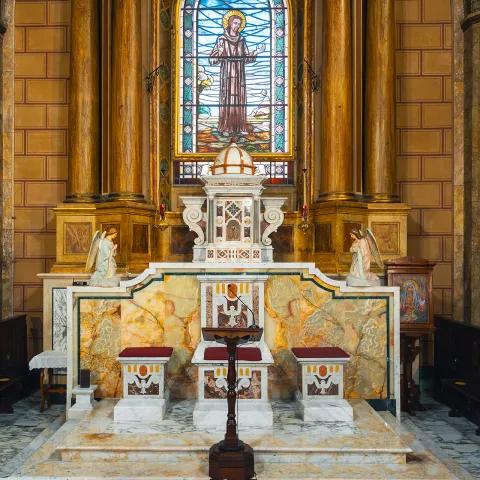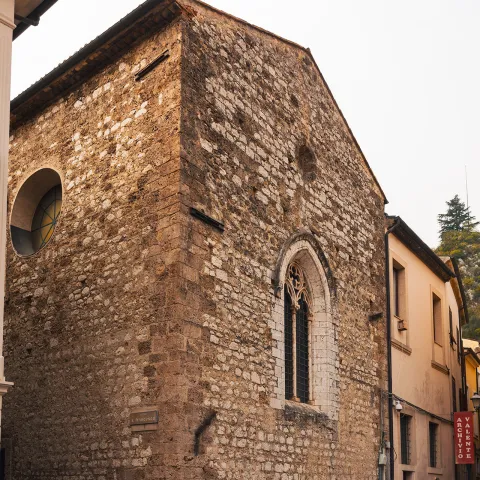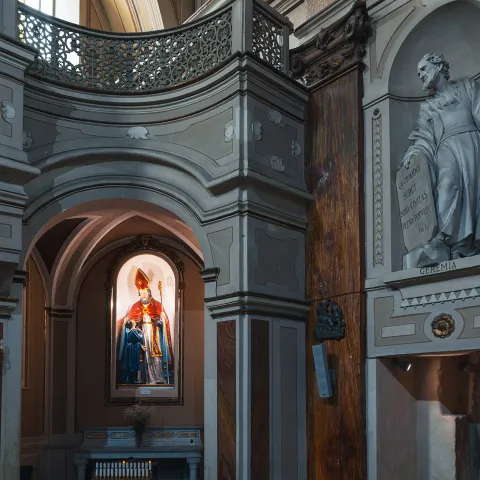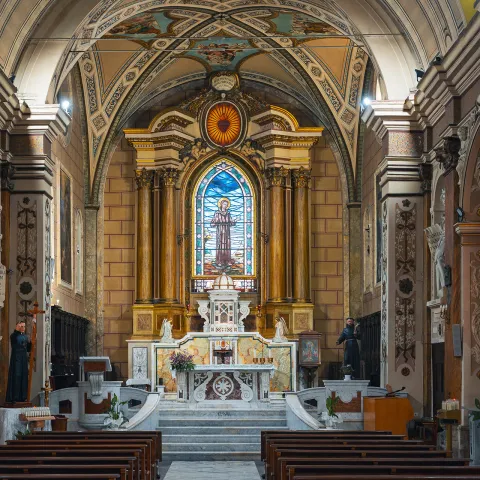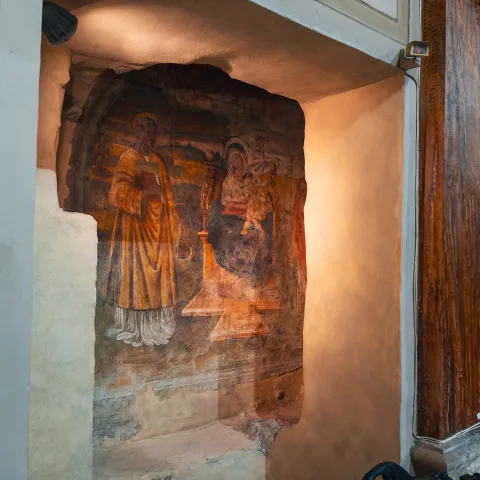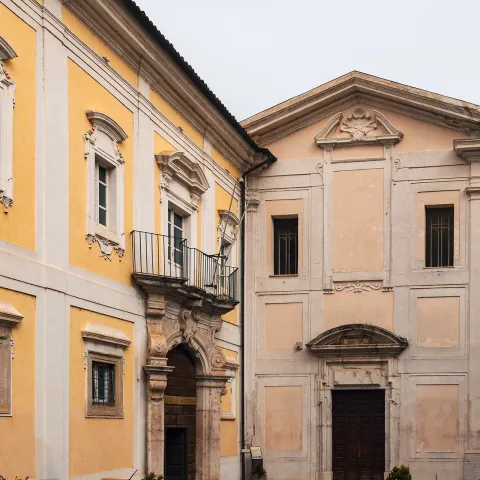Church of St. Francis and former Convent of the Minor Conventual Friars
The church dates back to the early decades of the 14th century and was part of the city's reconstruction program, which began in 1250 following the destruction caused by Frederick II of Swabia
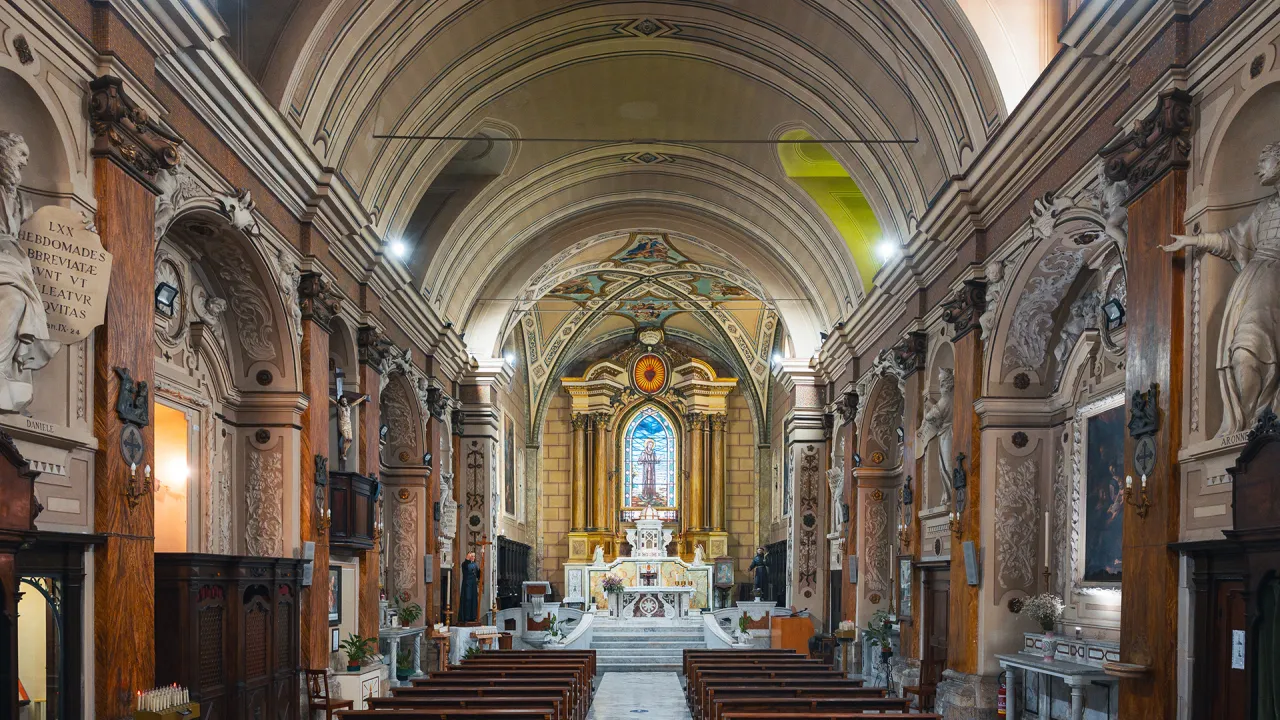
In 1363, thanks to a testamentary bequest by Cicco de Omobono, the church was renovated in aGothic style.
The building has a rectangular layout with a single nave, a smaller presbytery and a cross-vaulted presbytery with ribs. It features a trussed roof and is lit by two windows on the façade and single-lancet windows on the right wall. The windows on the left wall, which originally connected the church with the adjoining convent, were walled up following the suppression of the Order of Minor Conventual Friars. It is however probable that the original layout was extended during the same century. The only evidence of this second medieval phase can be seen in the ogival mullioned window with a central column and lobed decorations on the rear wall, as well as in the diastasis on the right side wall, free of adjoining buildings, partially lost during the restoration carried out in the early 18th century.
The convent annexed to the church, originally much smaller, was expanded between the 15th and 16th centuries with the addition of a square-shaped cloister featuring round arches.
The earthquake of 1654 caused significant damage to the complex, which was subsequently rebuilt and enlarged between 1683 and 1727. During this period, the church was provided with an elegant bell tower and covered with a barrel vault, while the cloister was closed, raised and equipped with a large staircase.
Inside the church, a fresco of the enthroned Madonna, dating back to the 15th century, was uncovered in 1970 in an area after the chapel of St. Blaise during restoration work. On the next altar, there is another fresco, the Madonna of Mercy, which is likely attributable to Lattanzio from Rimini.
From the 18th-century renovation, several elements remain: the convent portal with its balcony, the façades of both buildings framed by giant pilasters and several plaster statues inside the church depicting biblical characters such as Moses, Isaiah, David, Daniel, Solomon, Aaron, and Jeremiah. In 1883, the frescoes on the vault were painted by local artists Pietro and Domenico Biancale.
Thereafter the convent became home to the Tiziano College, established in 1763. Later, in 1798, it was used as a granary by French soldiers and as a weapons depot by the brigand Gaetano Mammone. A fire subsequently caused significant damage, leading to the abandonment of the building.
In 1808, following the suppression of religious orders, the church and part of the convent were donated to the Confraternity of the Sacconi. The remaining part of the building was rented to the Marsella family, which used it as stables and to store salt. Finally, in 1813, the complex was assigned to the Municipality of Sora, which used it first as a school, then as the seat of the sub-prefecture and the court. Today, it houses the Museum of the Media Valle del Liri, the Municipal library and the Historical Archive.
PHOTO GALLERY

VIDEO



